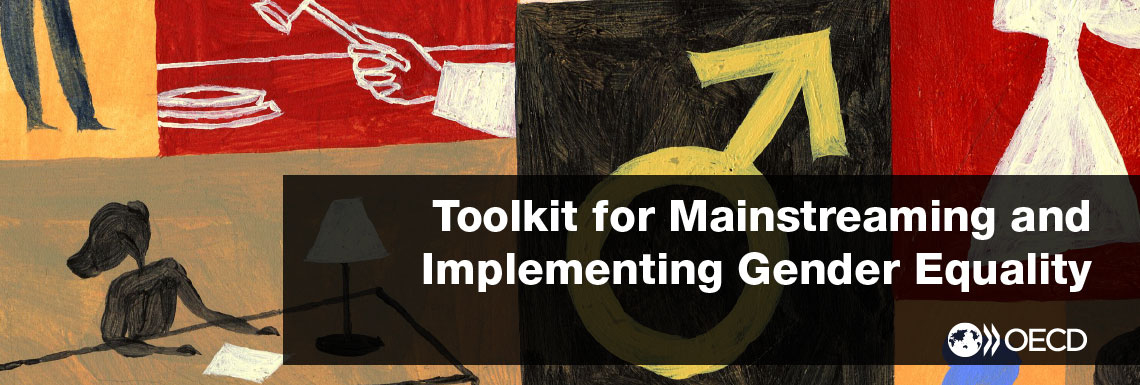Justice sector made a clear assessment of where it stands vis-à-vis its goals for gender equality and which interventions are necessary to achieve its vision
SELF-ASSESSMENT QUESTION
- Have you identified gender equality needs in the justice sector - tackling the broadest number of aspects such as employment and human resources management, judicial services, institutional culture and consolidated professional behaviors, etc - which would enable for identifying priorities and measuring progress?
- Did you rely on broadest number of sources of information - surveys, qualitative data, desk research, stakeholder engagement, focus groups etc – to ensure a comprehensive and reliable assessment of gender equality needs within the justice sector?
WHY IS IT IMPORTANT?
To achieve gender equality in the justice sector – both as an employer and provider of justice services - the judiciary needs to function and serve the public in a way that takes into account the different needs and circumstances of men and women. The judiciary should regularly conduct a thorough analysis of its own composition and operation, making sure that the data and information collected to this end address gender dimensions and implications. All judicial policies and measures should be scrutinized for how well (or badly) they prevent gender discrimination and promote gender equality.
Barriers to gender-sensitive judiciaries include formal rules as well as informal and culturally-sensitive aspects of the judicial organization. The needs assessment should also identify implicit forms of gender discrimination, for example in the way language is used within the judiciary and in the court-room. The assessment should result in well-defined gender equality objectives linked to priority actions and clear timelines. These are necessary for defining a comprehensive, strategic course of action.
ACTIONS TO CONSIDER
- Establish a baseline situation by having a clear picture of differences and gaps in the following key issues, as a minimum:
- The % of men and women across the judiciary, at different occupational levels and levels of jurisdiction;
- Availability and used parental leave and flexible work arrangements by men and women;
- Assessment of career development paths for male and female judicial staff, and specific challenges related to the different paths;
- Gender wage gap;
- Gender bias expressed in behaviors, believes, attitudes embodied by judicial staff and authorities as part of the judiciary’s workplace culture;
- Potential and/or assessed impact of judicial policies, services, programmes and practices on men and women beneficiaries;
- Internal and external factors affecting gender equality performance.
- Identify and engage different actors involved in the process of advancing gender equality (e.g., justice institutions, bar associations, women's organisations, law students, etc).
- Prioritise identified gender gaps and set measurable objectives and targets to close these gaps (see next section).
- At the courts level, assess the institution's history and achievements in gender equality; and identify enabling factors and promising initiatives to implement gender equality in the judiciary.
PITFALLS TO AVOID
- Focus only on ‘hard’, quantitative gender indicators and not using more qualitative approaches of data collection. Qualitative indicators can provide information on experiences, opinions and attitudes and therefore are useful in explaining gender bias
- Focus only on policies, documents, programs that specifically deal with gender issues instead of more general policies, documents and programs.
- Not involving gender experts. A well-executed gender assessment is not a routine assignment.
COUNTRY EXAMPLES
Portugal
The Portuguese gender equality policy framework is guided by the 5th National Plan for Gender Equality, Citizenship and Non-discrimination 2014-2017. Under this policy framework, Ministry of Justice developed its own 2nd Plan for Gender Equality 2015-2017. This plan for gender equality builds on a gender-assessment conducted by the Ministry of Justice which included a study of characterization, by gender, of the leading posts of the Ministry of Justice; evolution, by gender, of the professions associated with Justice in the years 2010 to 2013; and evaluation of the implementation of the intervention measures proposed in the 1st Plan for Equality of the Ministry of Justice.
France
The Directorate of Judicial Services, and more specifically the Human Resources Branch of the Judiciary, provides all magistrates with a guarantee of equal access to all posts. A gender analysis of judicial recruitment has been in conduct over several decades in France and allows for a comparison of data for a long span of time. Statistics are regularly drawn up on the distribution of women and men according to the age pyramid and the distribution of senior posts.

